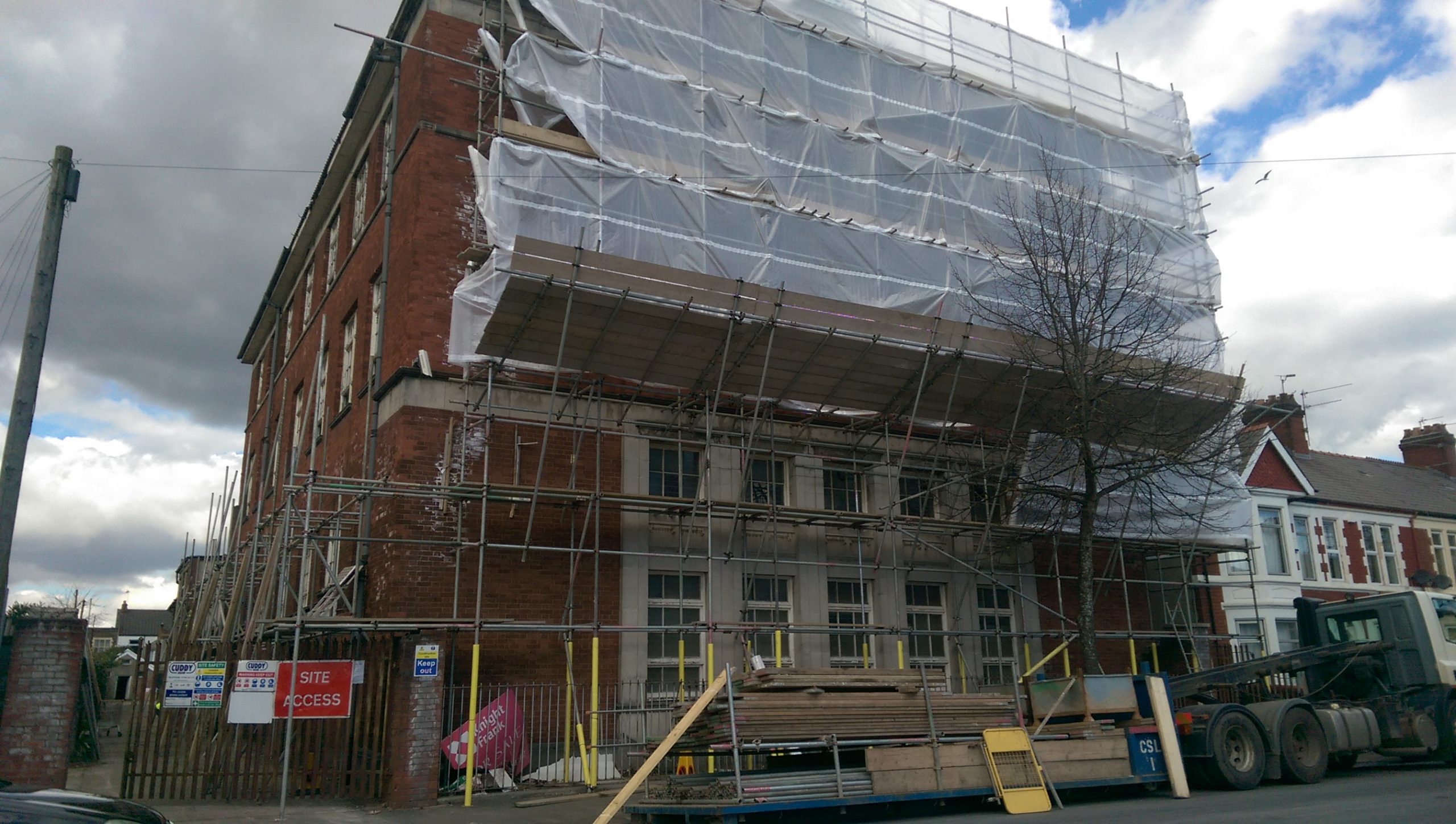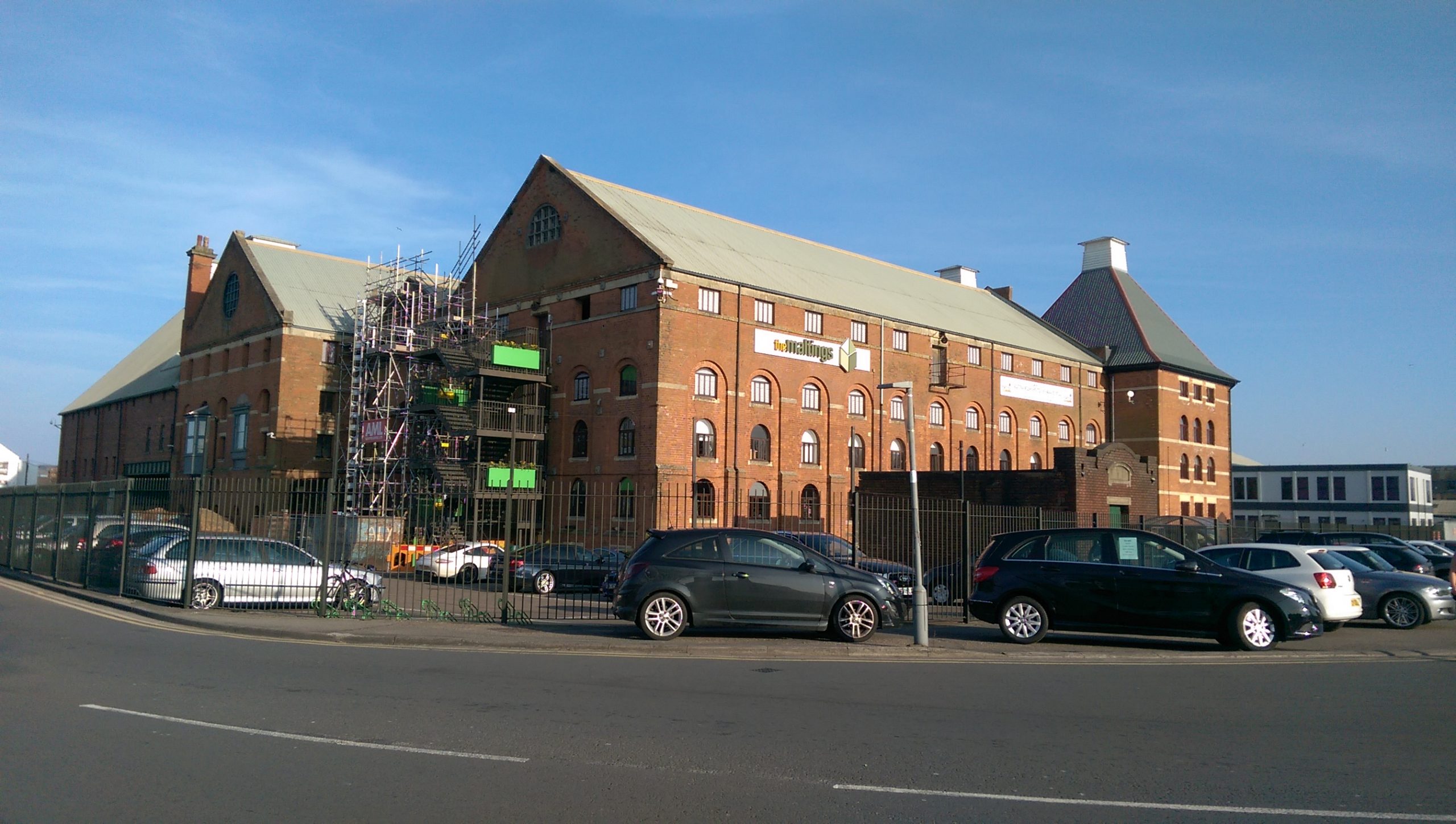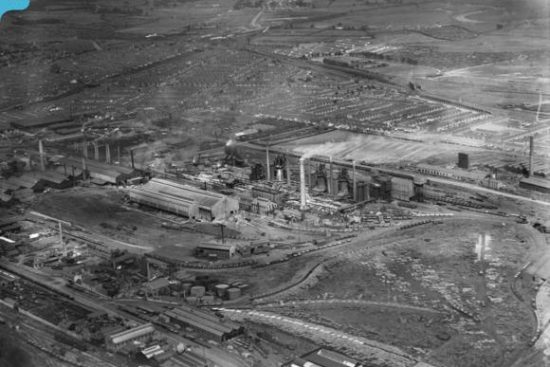Splott has changed a fair bit over the years. Industries have started up and shut down; shops opened and closed; houses erected and some demolished. In this article, we map the changing shape of Splott since its establishment.
Before Splott was Splott
Splott was formed from land reclaimed from the sea by English settlers who came to the area in the 1200s and built a seawall around the coastal salt marshes, drained them and created plots of land.
Between then and the late 1800s, Splott was farmland, worked by Upper and Lower Splott Farm. Neighbouring Tremorfa had its own farmstead in Pengam Farm. Though the land changed ownership a number of times, for six hundred years, Splott was a rural area dominated by farmland.
What’s in a name?
Common thinking on the origin of the name Splott points to the Welsh word ‘Ysblad’, ‘firm land surrounded by marsh’, later translated to Splott by the non-Welsh-speaking English settlers.
From fields to furnace
The next big change to Splott came mid 19th century with the Industrial Revolution and the need for steel. East Moors, a plot of land at the bottom of Splott next to the docks, was turned into a commercial development and East Moors Steelworks was built.
Owned by the Dowlais Company of Merthyr Tydfil and opened in February 1891 by Lord Bute, the works became known as the Dowlais Steelworks.
The plant, which had four blast furnaces and specialised in making steel parts for building ships, employed hundreds of men and at one point produced three million tonnes of steel a year. It survived an air raid in 1944 and continued to produce steel until its closure in 1978.
Brick by brick – building Splott
Most houses in Splott were built between 1875 and 1914, with the majority built to house the workers of the steelworks. Splott Road, Portmanmoor Road and Moorland Road were the main early streets to be built. Alongside this, two parks were built on land donated by Lord Tredegar. Splott Park, which opened in 1901, and Moorland Park had a number of recreational facilities and though some of the facilities are gone, the parks still exist today (though Splott Park is now considered to be in Tremorfa). Splott Park will be the site of the new STAR Hub from autumn 2016, a leisure facility with a library and indoor pool replacing Splott pool and the STAR Centre.
To educate the children of Splott, schools were built; the earliest being Splottlands School on Splott Road (on the site of the STAR Centre). The school opened in 1882 and taught 1,500 pupils. It was demolished in 1971 and the STAR centre was opened in 1981.
Moorland Road School and Splott Secondary Modern School followed, though there’s not much information around on their histories apart from the fact that Dame Shirley Bassey was a pupil at both.
Splott University Settlement, founded in 1901 to provide education to disadvantaged  people, moved to Courtenay Road in 1906. In 1923, it became St Illtyd’s College, the first Grammar School for Catholica boys in Wales. Unfortunately, this Victorian building was not granted listed status by the Welsh Government and is now in the process of being demolished, despite a vigorous and fervent campaign by local residents to save it (#savesplottuni for more information).
people, moved to Courtenay Road in 1906. In 1923, it became St Illtyd’s College, the first Grammar School for Catholica boys in Wales. Unfortunately, this Victorian building was not granted listed status by the Welsh Government and is now in the process of being demolished, despite a vigorous and fervent campaign by local residents to save it (#savesplottuni for more information).
Built in 1887, The Maltings (as the name suggests) was a huge factory that made malt from barley in three massive halls. It ran until the 1970s, when it was closed and the  building sat empty. In the 1980s the building opened as industrial units available to rent. The building was Grade II listed in 1975 as ‘probably the best large scale example of maltings in Wales, retaining industrial character in its conversion.’
building sat empty. In the 1980s the building opened as industrial units available to rent. The building was Grade II listed in 1975 as ‘probably the best large scale example of maltings in Wales, retaining industrial character in its conversion.’
Another building of historic significance in Splott is Eastmoors Hall, situated on Sanquhar Street. Built over 100 years ago in 1892 as a mission hall for the Calvanist Methodist Foreward Movement and housing 187 scholars, it now is home to Splott Youth Centre.
Up, up and away!
Did you know that Splott has an aviation history? No, me either, but it does, with a world-famous aviator and its own airport!
A well-known name though less well-known star of Splott is aviator Ernest Willows, who built airships in a shed on East Moors. Ernest was the first person to fly from London to France and was commemorated with the building of Willows High School on the site of his airfield and the naming of the Wetherspoon pub on City Road.
In 1930, Pengam Airport was opened on land in Pengam Moors. It had a short runway but was nevertheless used as a base for the 614 County of Glamorgan auxiliary air force and was renamed RAF Cardiff in 1937. The airport closed in 1954 and now the area along Seawall Road is a mix of industrials units and factories – some of which were former hangers used by the airport.
Shops and markets
There are now two main commercial streets in Splott: Carlisle Street and Splott Road, which were both choc-full of shops in the mid-to-late 20th century (less so now, unfortunately). However, there was a third commercial street in Splott, alive with the hustle and bustle of shoppers wanting to spend their money. Portmanmoor Road and surrounding streets had a bakery, fruit & veg shop, hardware store, chemist, hairdressers, newsagents, post office, chip shop and a few pubs before it and 17 other streets, including Llanelli, Greenhill, Smith, Enid, Layard, Milford and Menelaus St were demolished to make way for industrial units in the 1970s. Pubs included The Lord Wimbourne and the Bomb and Dagger (where Shirley Bassey performed at a young age). Apparently there was a crocodile hanging from the ceiling in the chip shop! The only remaining original building from this part of Splott is the New Fleurs Sports & Social Club at the top of Portmanmoor Road.
For an interesting fact about Carlisle Street, read Inksplott Interview with Maria Robinson from hair and beauty salon, Intense, which has been trading in Splott for 26 years.
Splott Market, situated just off Lewis Road, started trading in the 1980s and has thrived with the development of housing estates in West Splott.
For more information on present-day Splott Market, including a short interview with a stall-holder, read this Inksplott article.
Stars of Splott
Though born in Tiger Bay, Shirley Bassey moved to Portmanmoor Road in Splott when she was a child and lived there until she became famous.
BBC2 Travel Correspondent, Lynn Bowles, was born in Splott but didn’t stay long (her family moved to Rudry).
John Humphreys actually hails from Adamsdown (Pearl Street) but as he has said on numerous occasions that he’s from Splott, we’re happy to claim him as one of ours!
Memories of Splott
If you have any memories of old Splott or stories about Splott that you’d like to share, please get in touch – we’d love to hear from you.
Further reading:
BBC Blog: East Moors Steelworks, Cardiff



